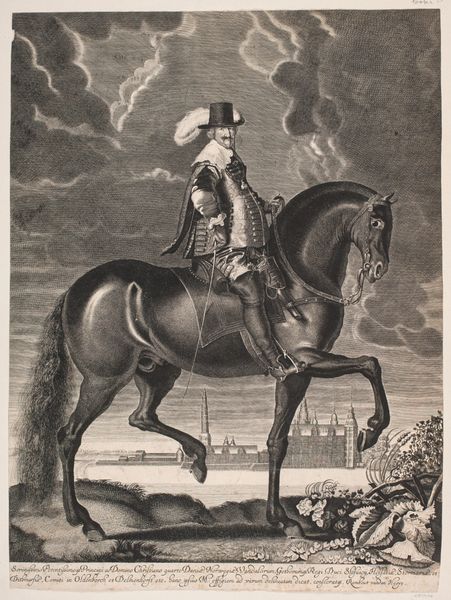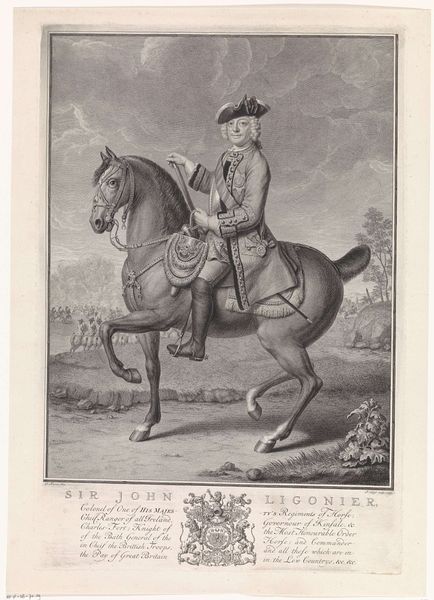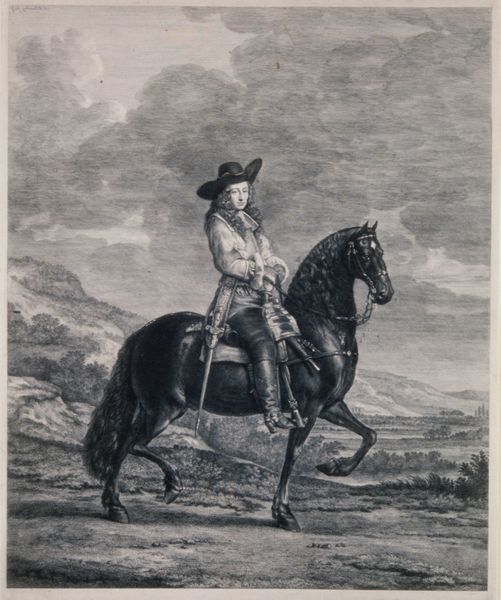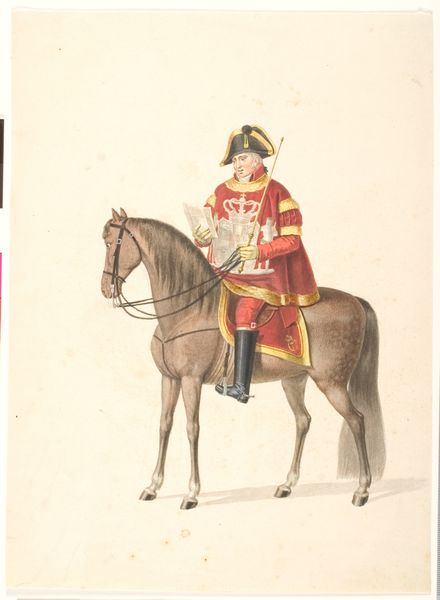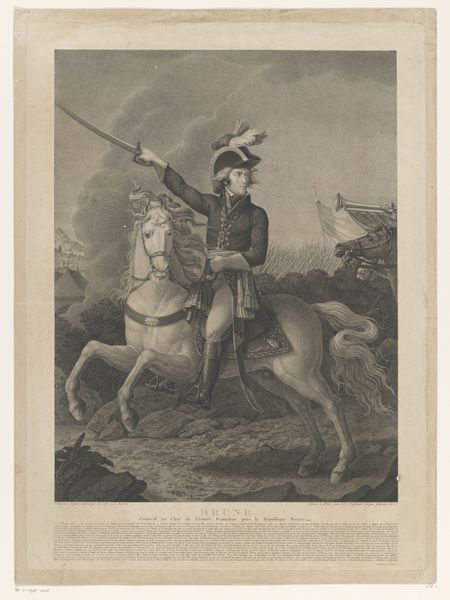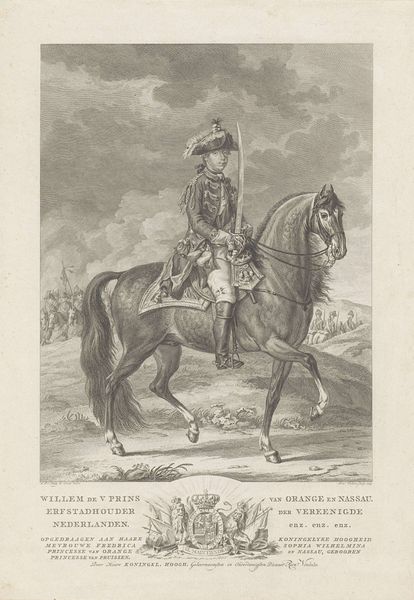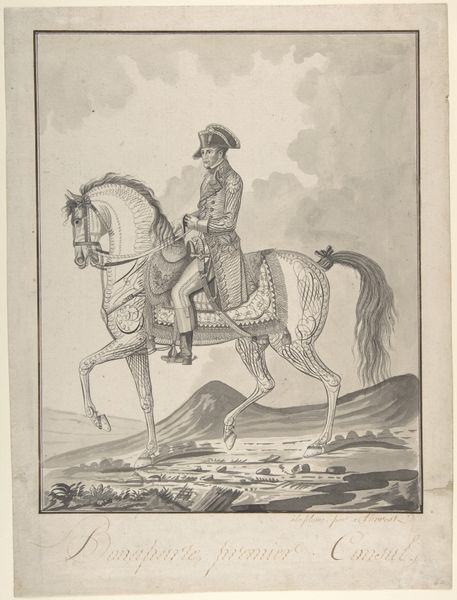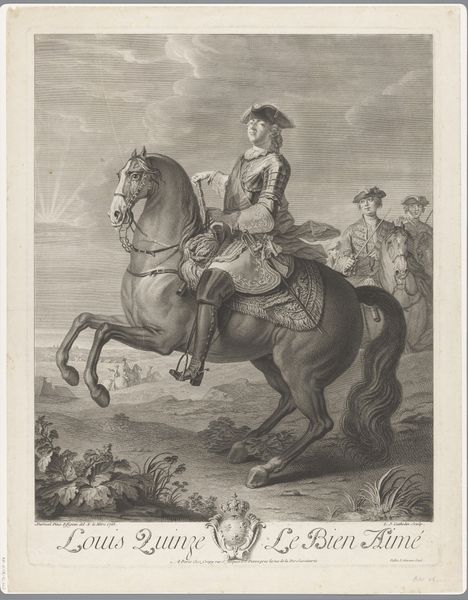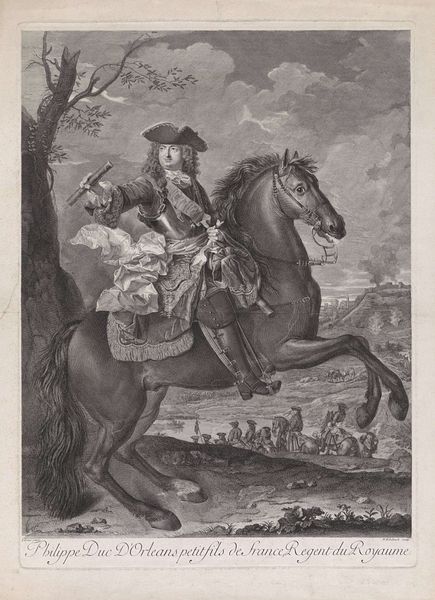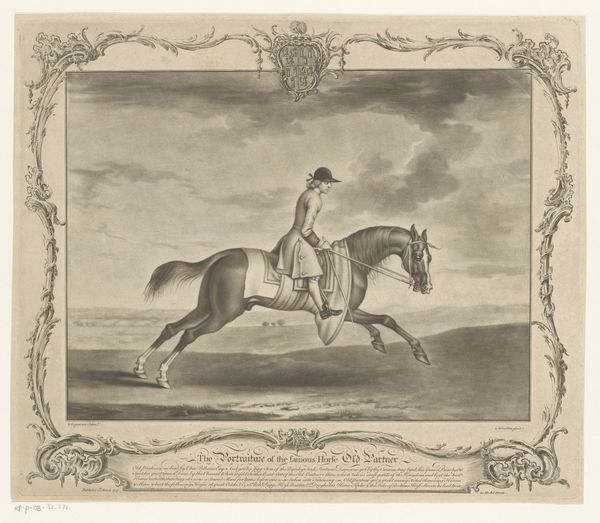
print, etching, engraving
#
portrait
#
baroque
# print
#
etching
#
history-painting
#
engraving
#
portrait art
#
erotic-art
Dimensions: 631 mm (height) x 473 mm (width) (bladmaal)
Curator: This etching and engraving from around 1643, titled "Christian IV til hest," presents the Danish King on horseback. The artist is Albert Haelwegh. Editor: Ooh, drama! Look at those clouds churning behind him. It's like he’s riding out of a tempest, or about to plunge right into one. Makes you wonder what's coming. Curator: Precisely. The artist leverages dramatic baroque conventions to communicate power. Observe the horse's elevated stance; the king is literally raised above the viewer, and strategically placed higher than the city behind him. Editor: And what a confident steed! It’s got such a noble sheen. But, it’s also a little stiff, a little too…perfect? It almost feels like the king’s trying too hard to project strength. A touch insecure, maybe? Curator: The technical proficiency here is remarkable. Consider the lines. They give depth to the king’s attire—the rendering of the metal plate armor—is particularly masterful. Note also the strategic contrasts and detailed foliage. Editor: Yeah, it’s meticulously done, you’re right. But the overall effect, at least for me, feels a bit…clinical. It’s technically impressive, but lacks that spark of…what, vulnerability? I feel like there’s a carefully constructed persona and that gets in the way of seeing the person. Curator: Well, it functions as propaganda. That’s evident in the details that are in clear service of the king, but there are multiple layers of meaning if you want to decode. Editor: Sure, and thanks to those chiaroscuro clouds that imbue an epic atmosphere. The flowers add to this… Ah! Curator: What did you have in mind by that final remark? Editor: Just noticing how small those castle-like buildings look relative to him, his horse, those dramatic flowers... he's almost cartoonishly big by comparison! Anyway, I must rush. It was a fun visual analysis. Curator: Indeed. And as someone attentive to historical context and meaning, it leaves me satisfied that viewers are considering how such symbolic portraits might function, historically and artistically.
Comments
No comments
Be the first to comment and join the conversation on the ultimate creative platform.
